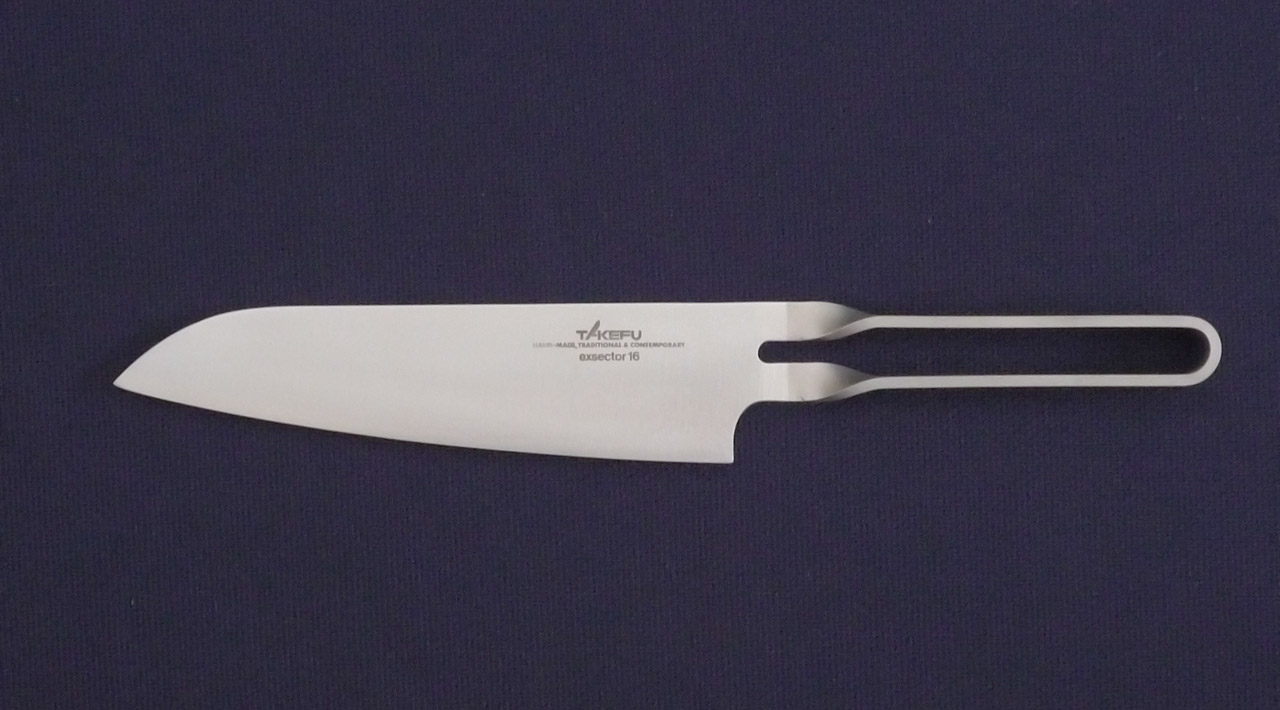 |
[03] Modern Design |

Most of the products displayed in the center of the first floor were developed through a collaboration between traditional craftsmen and an industrial designer, incorporating innovative design into traditional Japanese knives.
Both classic and modern designs, based on 700 years of history, are on display. You can also buy items that you like.
|

Items made through a combination of craftwork and industrial design |
 |
The ARTUS knife series was produced by combining the craftsman skill of over 700 years of Echizen blade history with the design sense of the industrial designer Kazuo Kawasaki.
It was commercialized as a result of the combined wisdom of craftsman and designer, following a year of repeated trials.
The knives were a larger-than-expected sensation, and production orders flooded in. The development of this new knife series, introducing new designs, became a model case study in the revitalization of areas associated with traditional craft production in Japan.
|
 |
 |
|
Following the success of the ARTUS series, a dozen series, including the culeus series, were awarded a Good Design Award by the Ministry of International Trade and Industry. The knives also achieved recognition overseas in ID Magazine's international design review selection.
|

| About Kazuo Kawasaki |
Born in Fukui city in 1949. Graduate of the Kanazawa College of Art.
Representative director of EX Design.
|
|
• Winner, 1990 Mainichi Design Award • Winner, Small and Medium Enterprise Agency Director Prize • Winner, silver award of the Japan Design Committee Design Forum • International Design Review Selection (USA) • Selected for permanent exhibition at the Cooper Hewitt Smithsonian Design Museum • Honorable mention, Japan Design Award • Winner, gold award of the 13th Ljubljana BIO exhibition • Winner, ICSID special prize of the 17th World Design Conference • Winner, 1993 international design prize of the Design Center Stuttgart selection • Selected for permanent exhibition at the Montréal Museum of Decorative Arts • Recipient of numerous Good Design Awards.
|
Japanese-style kitchen knives |
The knives seen here are roughly divided into two types (double-bevel and single-bevel blades), and many knives are specially designed to cut a specific thing (ingredient). Single-bevel knives, being particularly distinctive of Japanese knives, are often seen being used by chefs of Japanese cuisine.
The difference between the types is in how the steel that forms the blade's edge is attached. If you were to look at cross-sections of the knives, the hard steel (hagane) that forms the edge of a double-bevel blade sits between layers of the outer soft iron (jigane), while the hard steel of a single-bevel blade is attached to one side of the soft iron.
Double-bevel blades are particularly suited to making straight cuts, so they're popular for knives meant to cut vegetables or noodle dough, and are the most common kind of blades seen on Western kitchen knives. Single-bevel blades, on the other hand, have a tendency to drift toward the direction the edge is on while cutting with them, so they are made specifically for left- and right-handed users. However, single-bevel blades can be made much sharper than double-bevel blades, so they are better suited to tasks like making thin or delicate slices, or leaving sharply defined cut ends.
|
| Single-bevel blade |
Double-bevel blade (flat grind) |
Double-bevel blade (convex grind) |
 |
 |
 |
Floor Map |
 |
|

